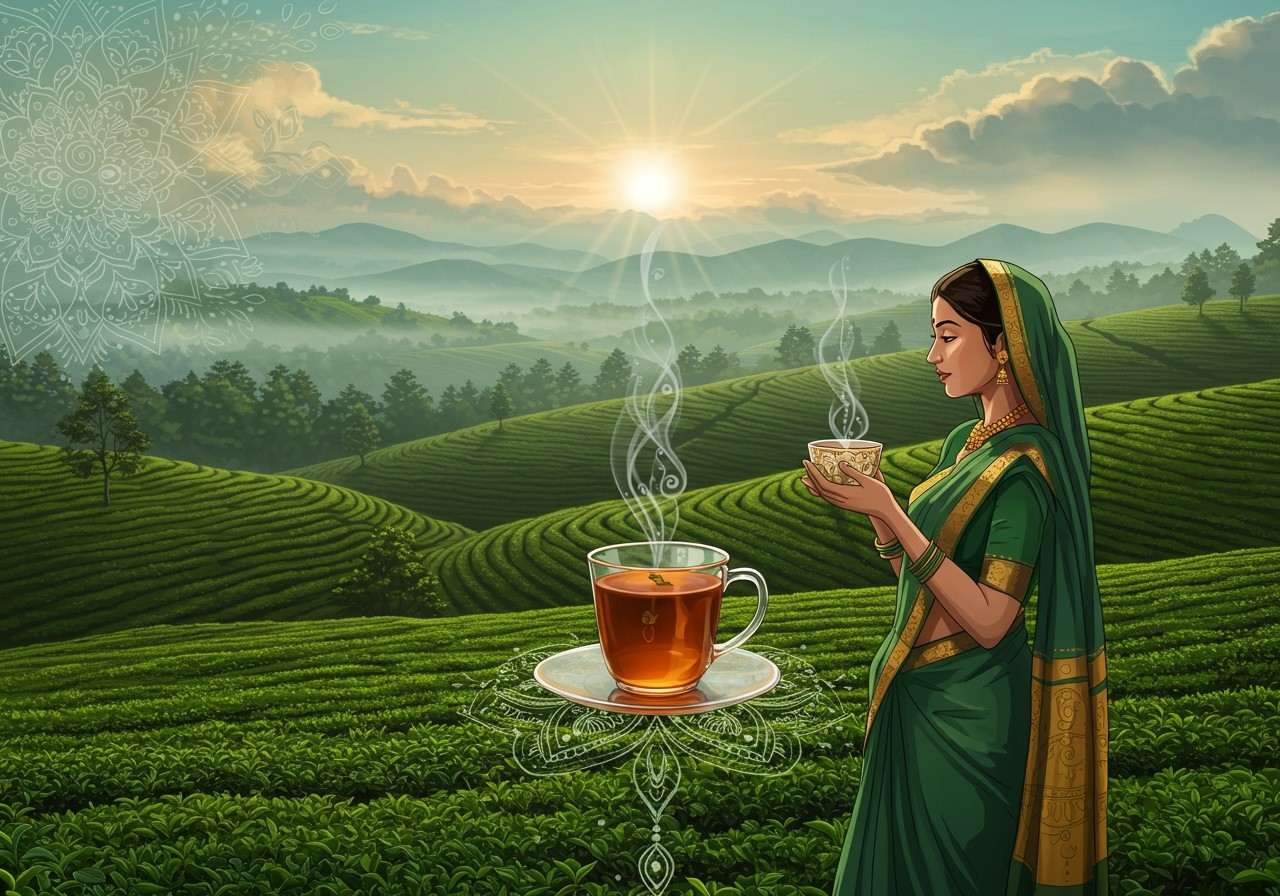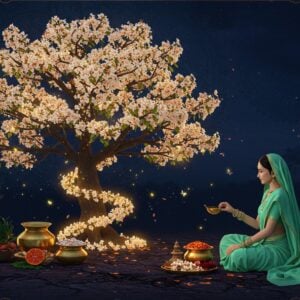
There are few things as deeply comforting to an Indian soul as a warm cup of chai. It’s the gentle start to our mornings, the welcome break in our busy afternoons, and the companion to our heartfelt conversations. Among the many teas we cherish, one holds a special place, often called the “Champagne of Teas” – the exquisite Darjeeling tea. This isn’t just a beverage; it’s a legacy, a delicate dance of flavour and aroma that tells the story of the majestic Himalayas.
Join us on a journey to explore the history, the unique environment (or terroir), and the incredible flavours that make Darjeeling chai a treasure in our culture.

Ek Sunahri Dastaan: The Rich History of Darjeeling Tea
The story of Darjeeling tea begins in the mid-1800s. Around 1841, a British civil surgeon named Dr. Archibald Campbell planted some Chinese tea seeds in his garden in Beechwood, Darjeeling. He was curious to see if they would grow in the cool mountain air. Little did he know, this small experiment would blossom into a global phenomenon. The British were looking for a new source of tea, and the success of these first plants led the government to establish tea nurseries.
By 1852, the first commercial tea gardens like Tukvar and Steinthal were established. The industry grew rapidly, and by 1874, there were over 100 gardens flourishing on the hillsides. The unique, delicate flavour of the tea grown here soon gained recognition, and by the 1860s, it was being sold proudly under its own name. To protect its unique identity, Darjeeling tea was granted the Geographical Indication (GI) tag in 2004, ensuring that only tea grown in these specific estates of West Bengal can carry this prestigious title.
Pahadon ki Aatma: The Unique Terroir of Darjeeling
What gives Darjeeling tea its special magic? The secret lies in its ‘terroir’ – a French term that refers to the complete natural environment in which a particular crop is grown. The terroir of Darjeeling is unlike anywhere else on Earth. The tea gardens are nestled in the Himalayan foothills, at breathtaking altitudes between 600 and 2,000 meters.
This high altitude means cooler temperatures, which makes the tea plants grow slower. This slow growth allows the leaves to develop a much more complex and aromatic flavour profile. The soil is rich in minerals, and the unique combination of cool, misty weather and seasonal rainfall creates a tea that is light, floral, and utterly exceptional. It is this very terroir that earns Darjeeling tea its title as the “Champagne of Teas”.
Har Ghunt mein Ek Naya Swaad: The Flavours of Darjeeling
Drinking Darjeeling tea is an experience for the senses. Its flavour profile is remarkably diverse, changing with the seasons in which it is harvested. These harvesting periods are known as ‘flushes’.
- First Flush (Spring): Harvested from late February to mid-April, this is the first growth after the winter slumber. The liquor is light in colour with a fresh, floral aroma and a lively, brisk character. It often has subtle fruity undertones, making it a truly refreshing cup.
- Second Flush (Summer): Picked from May to June, this is the most celebrated flush. It is renowned for its unique muscatel flavour – a delightful taste often described as a musky spiciness with hints of ripe grapes. The tea has a fuller body and a rich, amber colour.
- Autumn Flush (Autumn): Harvested after the monsoon season in October and November, this flush produces a tea that is smooth and mellow. It has a darker liquor with a hint of sweetness and often carries woody and fruity notes, making it a perfect comforting brew for cooler evenings.
Beyond these main flushes, Darjeeling also produces delicate green teas and oolongs, each offering a unique taste of this incredible region.
Chai, Parampara aur Hum: Cultural Significance in India
In India, especially in middle to upper-middle-class homes, tea is a cherished ritual. It’s a symbol of hospitality, a reason for family to gather, and a moment of peace in a busy day. Darjeeling tea, with its premium quality and rich heritage, often graces special occasions and quiet moments of reflection.
The gentle ritual of brewing a perfect cup of tea can be deeply meditative. To enhance this experience, many of us love to light an agarbatti or dhoop, letting a gentle fragrance fill the air. The soothing aroma of sandalwood or a fresh floral scent can transform your tea time into a truly serene experience. For those moments, you might consider our premium Sandal Dhoop, designed to create a tranquil atmosphere in your home.
Your Questions on Darjeeling Tea Answered
Many people are curious about what truly sets this tea apart. Its uniqueness comes from its unmatchable flavour, aroma, and light appearance, which are a direct result of the Himalayan foothills where it is cultivated. The high altitude and cool climate are perfect for creating those delicate notes we all love.
If you’re wondering how to brew the perfect cup to capture its essence, the key is to not use boiling water. Let the water cool slightly for a minute after boiling, then pour it over the leaves and let it steep for about 3-5 minutes. This gentle approach prevents the delicate leaves from burning and helps release their full aromatic profile.
Embracing the legacy of Darjeeling tea is about appreciating more than just a drink; it’s about connecting with a rich piece of our Indian heritage. In today’s world, it’s wonderful that tradition and convenience can go hand-in-hand. At poojn.in, we are committed to bringing you authentic products that honour our culture. We ensure that every item, from our teas to our puja essentials, is sourced with care, so you can continue your traditions with purity and ease.


